written and photographed by Kevin Max, Tricia Louvar, Anna Bird, Bronte Dod
additional photography by Isaac Peterson and Linda Donahue
The chatter of Oregon sound fell near irrigation pipes and flowing streams and city blocks. Oregon has had a history of being the first in and last out of a tough recession. Residents flinched, retreated, plotted and acted.
Oregonians worked together and shouldered tough times. They took back their town or neighborhood from economic uneasiness. They stared into the future they hadn’t yet had but wanted it back anyway.
Lack of money diverted conversations and hope straightened them out. Prosperity, however, did not return with equality. Hard times left towns desolate but scattered with diehards. They weren’t afraid of elbow grease and waiting.
During a story pitch meeting, we talked about Fields Station, Pendleton Round-Up, Poppa Al’s, Alf ’s Ice Cream & Burgers in McMinnville, Hal’s Hamburgers, Tastee Treets, Newberg’s drive-in theater, Sno Cap Ice Cream, Sisters Rodeo. The list of Oregon’s skimmed-over spaces—the vestige of Americana—kept flowing.
In mid-April at this story’s launch, editor Kevin Max stopped us and said, “This is an in-house job, team.” A tizzy erupted. “Let’s shoot this in film.” We hooted and hollered.
“Life begins in the details,” said Rob Kerr, our photo editor. We divided Oregon into grids on a dry-erase wall. Each person took a region to explore.
Instead of dispatching professional photographers, we sent six of our in- house writers, editors and designers into the field to report, witness and shoot film on old cameras. Kerr brought in a copy of Robert Frank’s seminal The Americans for everyone to study. He gauged what we knew and didn’t about light metering, film formats, shutter speed and camera angles. We bought the film, loaded the film and spread out across the state. Together, we shot 660 photographs (both color slide film and negative film).
“No digital photography. Don’t do it. Put the camera phones away,” Kerr said. “Stay true to the assignment. Trust the process and take notes on whatever you shoot.” As documentarians, we traveled Oregon looking for places where the past and present overlapped. Were we looking for Americana in the twenty-first century or nostalgia made innocent over time?
We tracked Oregon’s past from car windows, into back roads, from highways and along train tracks. Each region had its own aesthetics. We found the shots and stories.
The Gorge
Freight trains rambled through. Cargo ships steamed along the Columbia’s current. Cars sped past at seventy miles per hour. Wind whipped through the trees and farms and turbines.
The train tracks once plowed the way for progress. Now, teenagers walked the tracks.
Those who stayed planted orchards and built towns. A Moorish theater, frowsy from neglect, remains. Shelves at Klindt’s Booksellers hold contemporary novels and 145 years of stories. The Sunshine Biscuit Mill has been refashioned as the Sunshine Mill Winery. Some businesses closed, others wait.
Pieces of the Columbia Gorge Scenic Highway—the first of its kind, the King of Roads—beckon those with slick rides. e freeway below has no bends to slow down the views.
The Gorge has been devoted to the drivers, the transporters. Travelers stay at the Oregon Motor Motel; Route 30 Classics showcases pristine vintage cars and pays tribute to James Dean. East Wind Drive-In pedals thick burgers and thick shakes—fuel for the journey or a pit stop for thru-hikers on the Pacific Crest Trail.
Oregon Coast
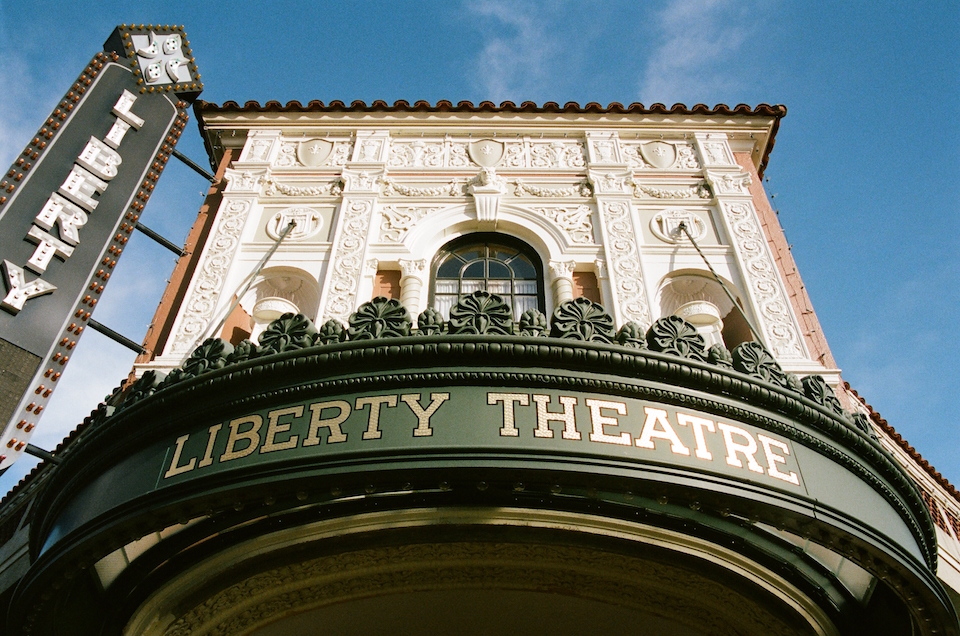
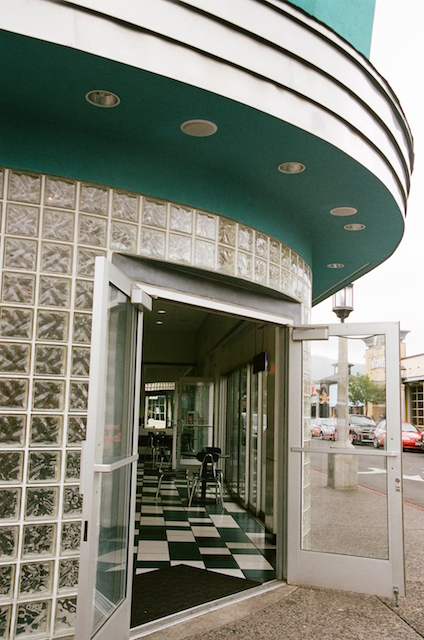
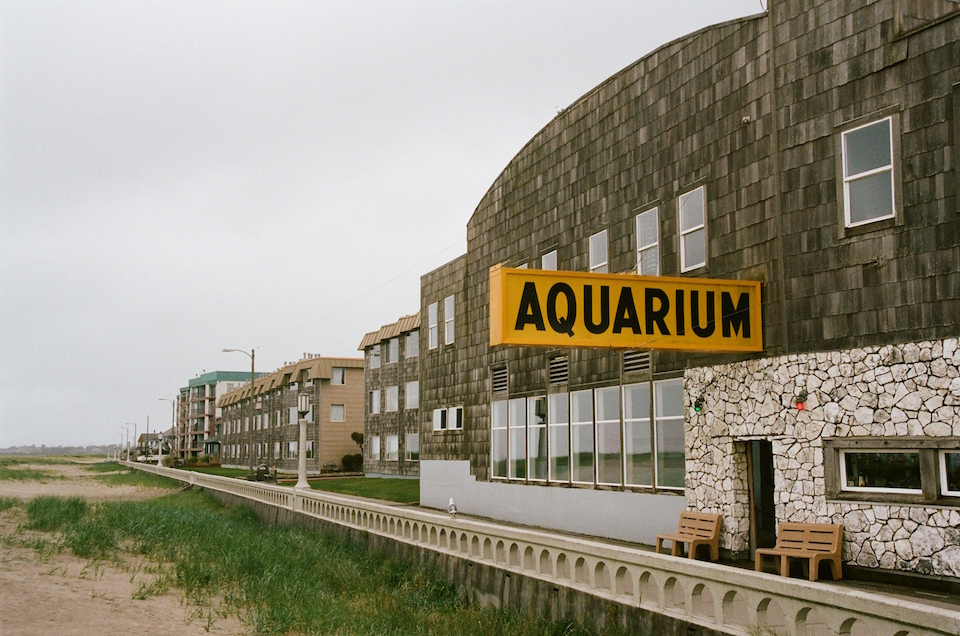
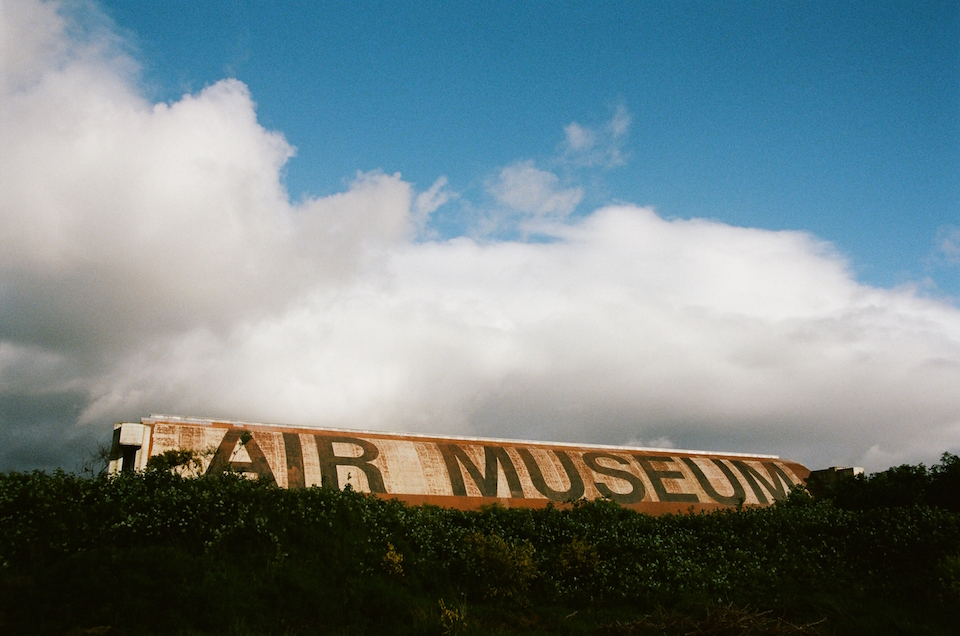
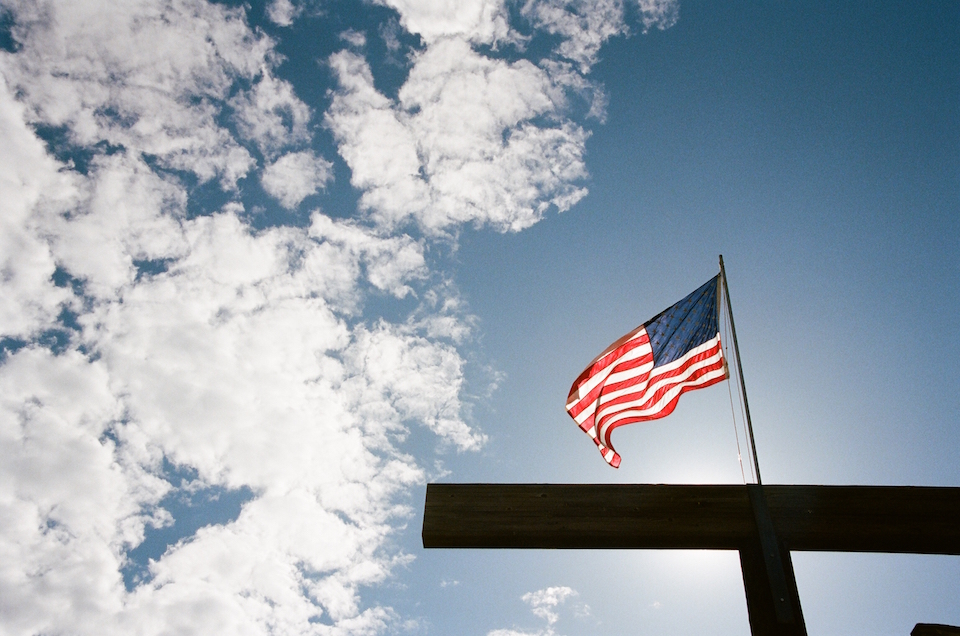
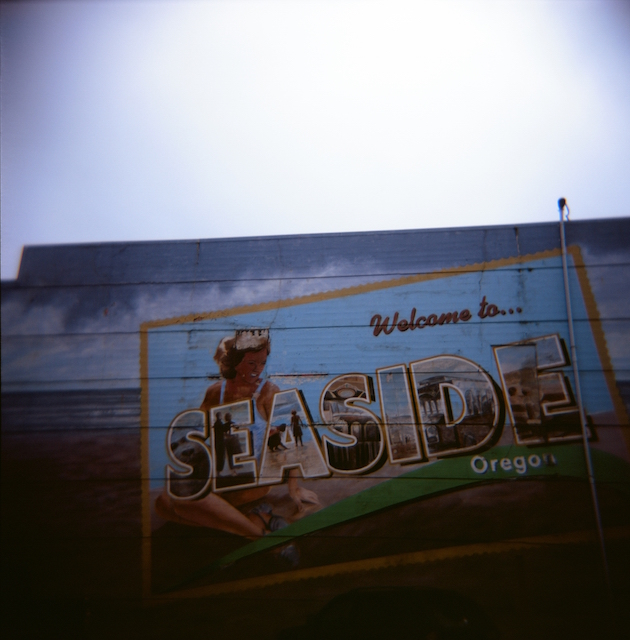
Rasterize a square inch of the Oregon Coast. Land and sea and sky live in that image. They live all together, in parts of one another or in isolation.
Battery Russell, Battery Pratt, wreck of the Peter Iredale, Fort Stevens—dark and dirty and overrun with mossy parts. Driftwood shelters, kite flyers, saltwater taffy candy makers—soaked in the tangles of youth. Eternal and ephemeral intertwined.
Somewhere on the coast, the wind and mist never quit. Clouds drowned the air. e ocean recoiled and then unleashed onto haystacks at high tide. THe steel waves—the hiding places for surfers in thick sealed wetsuits—destroyed sandcastles and erased love notes drawn in the wet sand.
The fishers, the loggers, the vacationers, the part-timers. e square and round dancers at the Hayshaker Dance Club in Warrenton. THrift stores and drifters dotted the Pacific Coast Highway. The coastline curved to bend and blend artifice with nature. One will slowly win this battle one grain of sand at a time.
Central Oregon
Tastee treat is a Prineville magnet that came long before spellcheck. It opened in 1957 when Dwight D. Eisenhower was president and the Brooklyn Dodgers agreed to make a one-way trip to Los Angeles. On one side of Tastee Treet is a classic burger and fries counter circled by chrome stemmed stools. On the other is ice cream, where high school-aged kids serve cones to younger kids.
The town has a Main Street, with shops that have been left out of mainstream for decades. Shirtless kids on skateboards buzz down the street. Did their dads do the same? A pickup truck pulled through the Tastee Treet parking lot with a hungry-looking dog hanging over the side.
Inside, a young cone server piped up. “What’s that?” An old camera, I said. Before cell phones. By coincidence, the camera was also built in the same year that Tastee Treet was.
The server scooted around the counter to give it a try. Consumed with fascination, he framed an old Coca-Cola sign and shot. For a moment, he was gone—a photographer on assignment for a glossy magazine, just in from a big city and shooting old things in a small town with an old camera.
Eastern Oregon
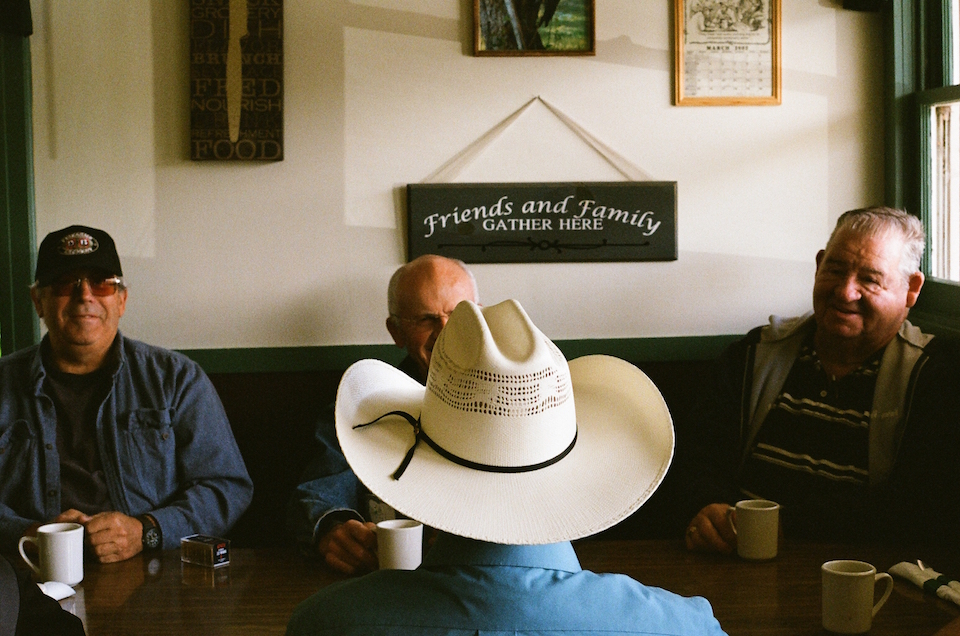
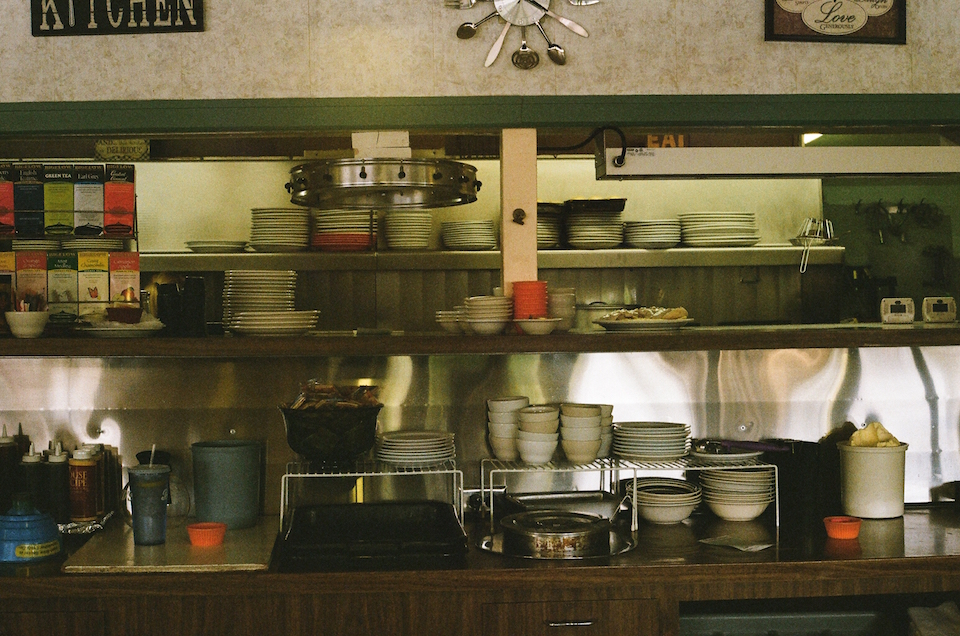

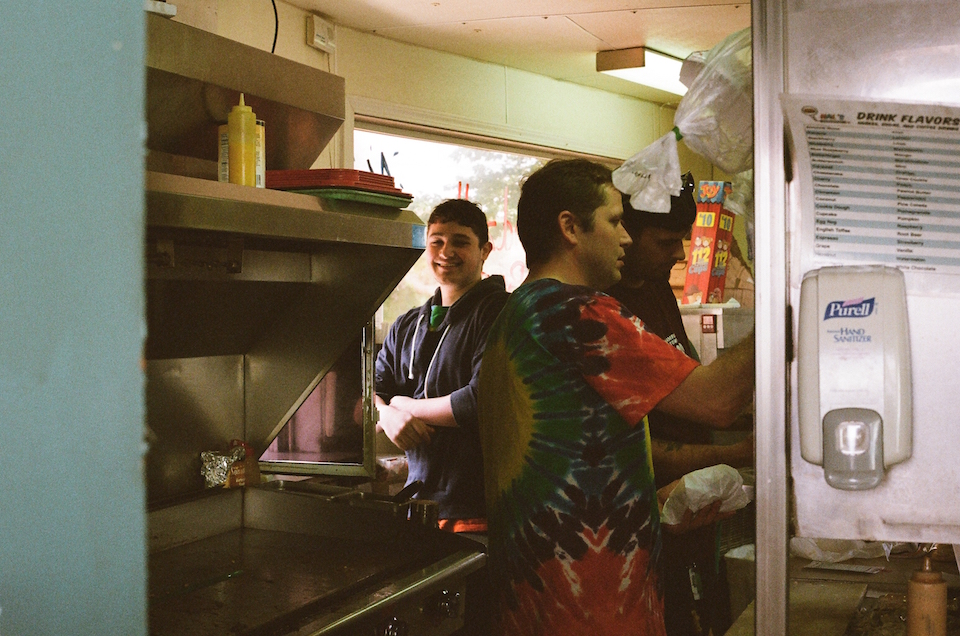
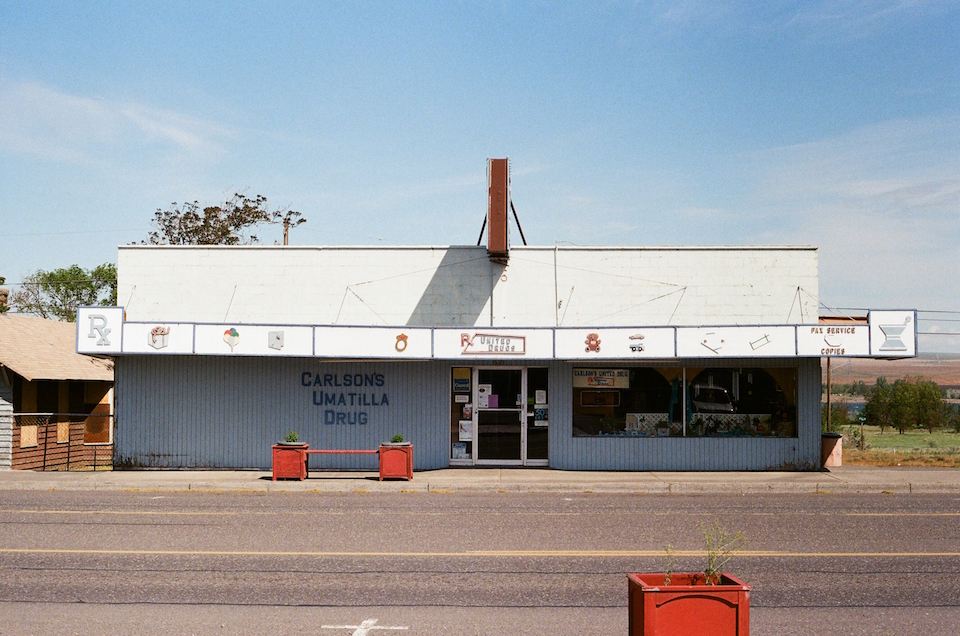
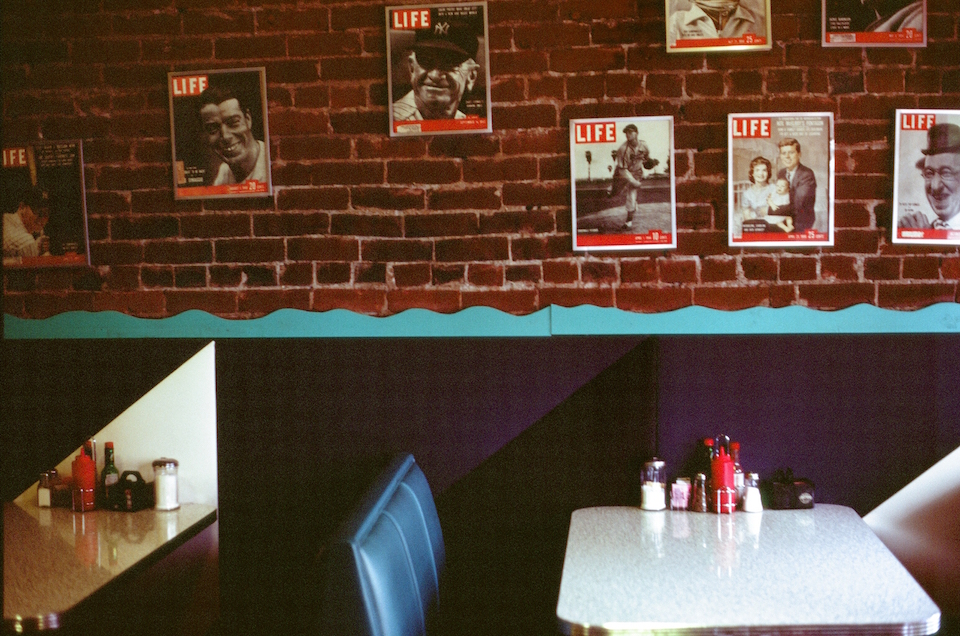


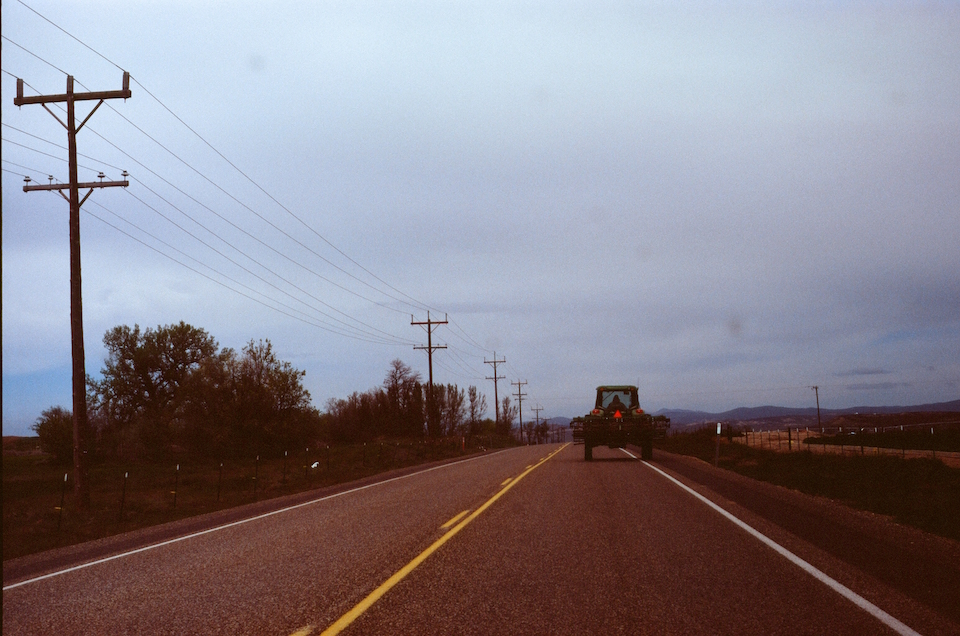
Forests and farmland flank long stretches of Eastern Oregon’s rural highways. No cars passed each other for hours. A wide tractor motored slowly and on the soft shoulder, getting out of the way of nothing.
In town, cars lined up on both sides of Hal’s Hamburgers in Pendleton. The Rivoli Theatre is getting a facelift from its 1922 bones. Mainstreet Diner, next to the theater, served coffee and food. LIFE Magazine posters and vinyl records hung on the walls.
A young man took tickets at the small, red box office at the entrance to the La Grande Drive-In. Double showings still begin at dusk each night in the summer.
At the Inland Café in Baker City, the sounds of forks and knives cut up breakfast conversations. A waitress refilled coffee mugs for men who sat in the corner, where they sit most Sundays. Before their retirement, they worked as business owners, engineers, veterinarians and firemen.
In Mitchell, a kitschy, oversized wooden rocking chair once sat along the highway. The owner of a café in town said she heard someone bought the chair; she saw it being driven away only a week before.
Southern Oregon
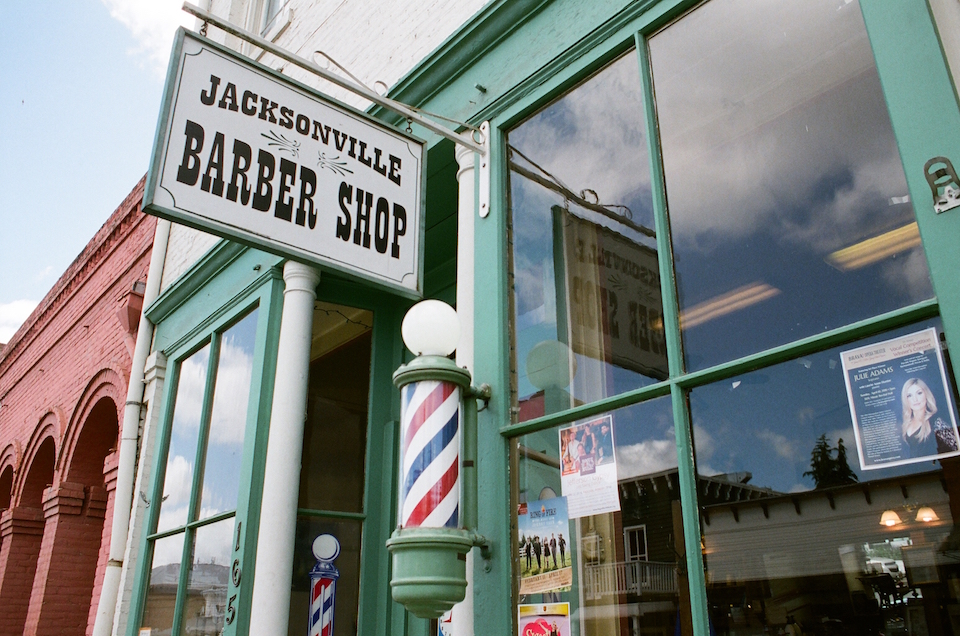
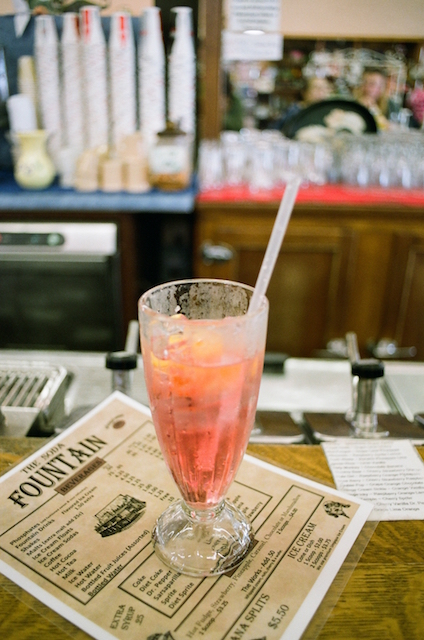
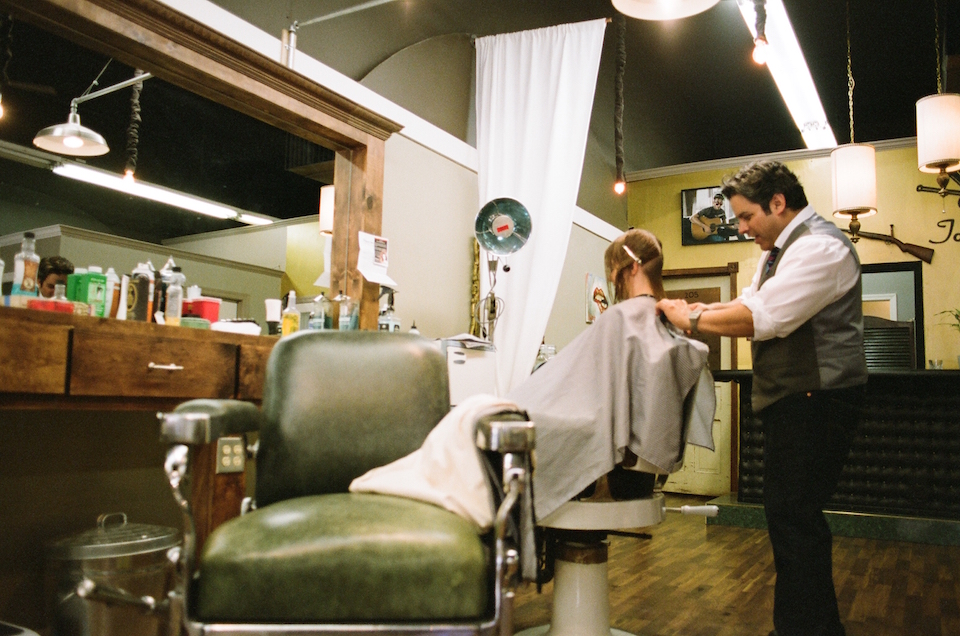


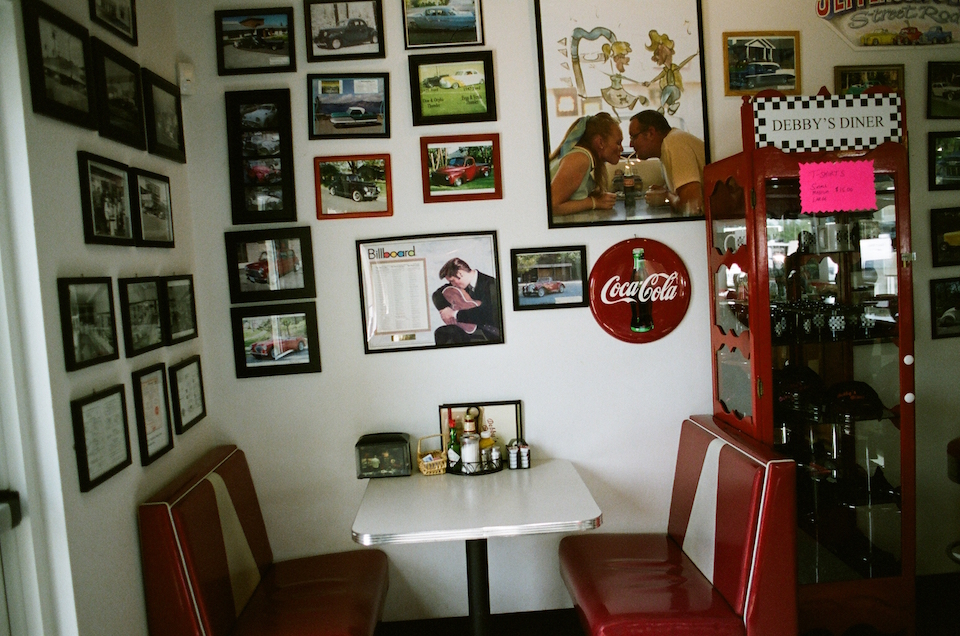
The smell of fresh wood chips. The last of the lumber mills now on the outskirts, beyond the fast food stops and big box stores. The downtown and the Old Town revamped, restored, prettied up, if just with lamp posts and sidewalks. Marquees and old storefronts left intact.
Rogue eater in Grants Pass once hosted first-run matinees on Saturdays for twenty- five cents. Newsreels played during the Second World War. Now the theater hosts music shows—blues, punk and modern rock. Loggers and mill workers once flocked to the Owl Club & Billiard Parlor on payday to “drink it up.” No sign of the parlor aside from the chipped-away paint on the bricks of a natural food store. The Grants Pass Pharmacy still offers twenty-five-cent cherry phosphates at the soda shop, and Blind George’s Newsstand still pops popcorn.
New businesses reintroduced old flavor— Rogue Barbers sought vintage barber chairs and décor to transform the old shoe store. Hot towel shaves meet artisan beard oils. Debby’s Diner lacks curbside character but pads the interior with nostalgia—Betty Boop and Coca Cola well represented; a plate of greasy bacon and black coffee; doo-wop playing from the juke box.
Tourists take to the vineyards and river rapids, but the locals seek refuge in subtle comforts of the past.
Willamette Valley
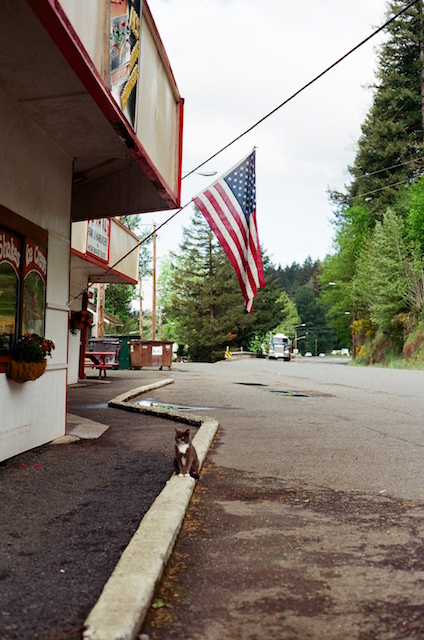


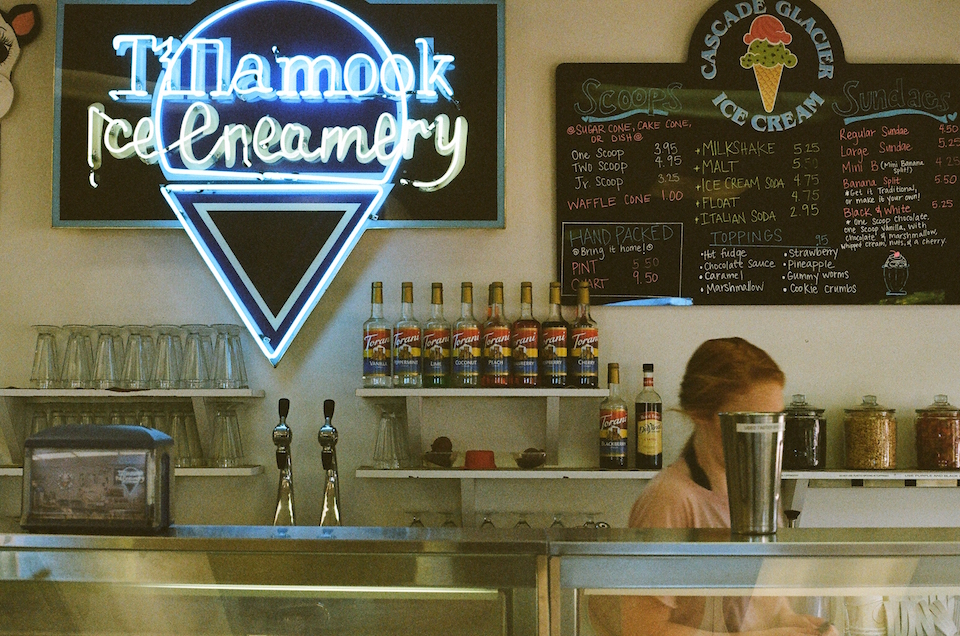
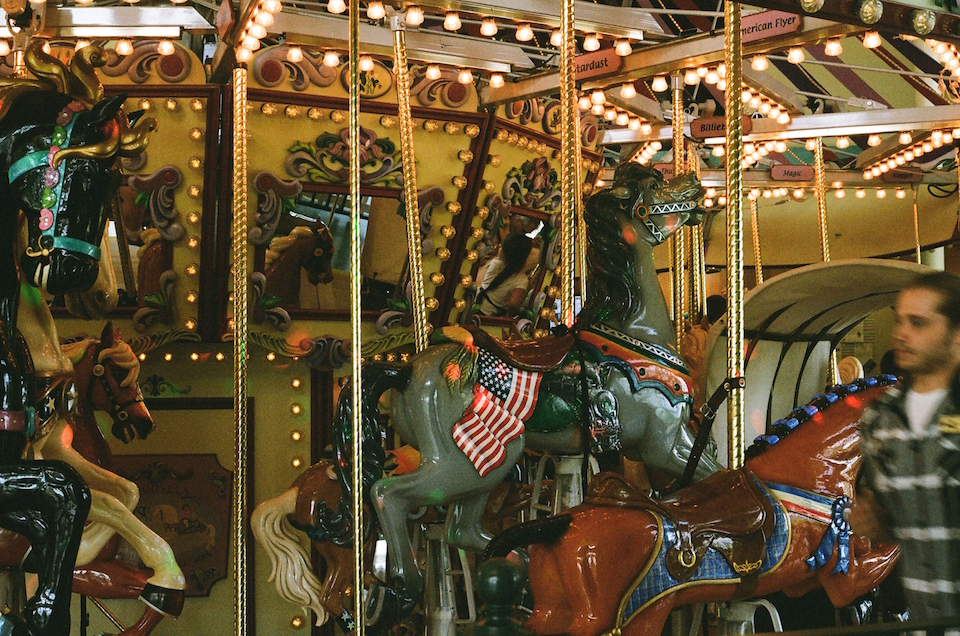
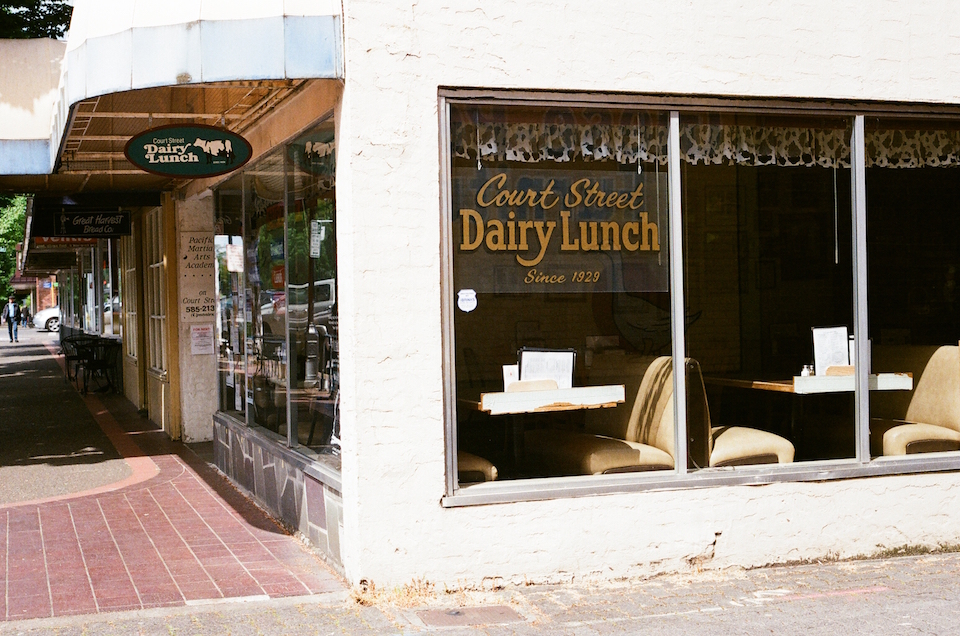
Children waited to ride the Salem carousel next to the Willamette River. Music played in the background, while parents watched their children. Downtown, the sign for Whitlock’s Vacuum Cleaner Clinic looked untouched, dating back to 1952.
At Oak’s Amusement Park in Sellwood, teenagers walked in groups. e park—built in 1905—is the oldest operating amusement park in the country. People still frequent the park and wait in line for rides, games and food stands.
There’s a new owner at Poppa Al’s, a walk-up burger joint along the Santiam Highway. It’s still a white building with red trim and still serves “famous hamburgers on homemade buns.”


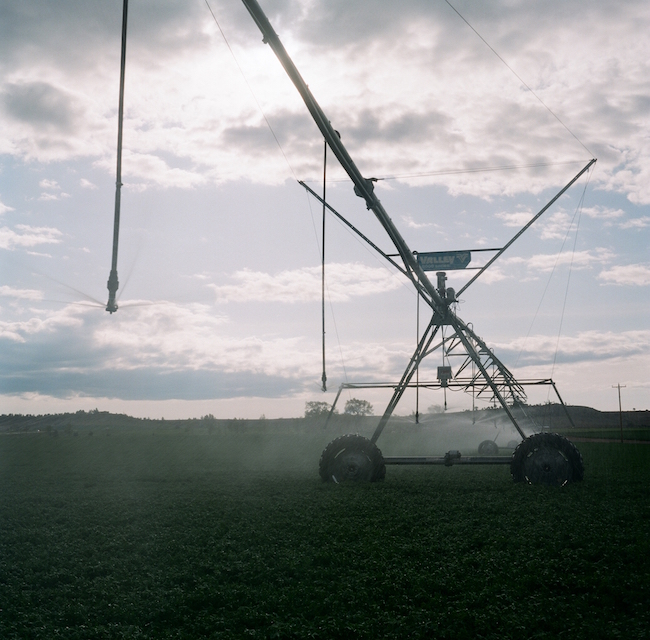
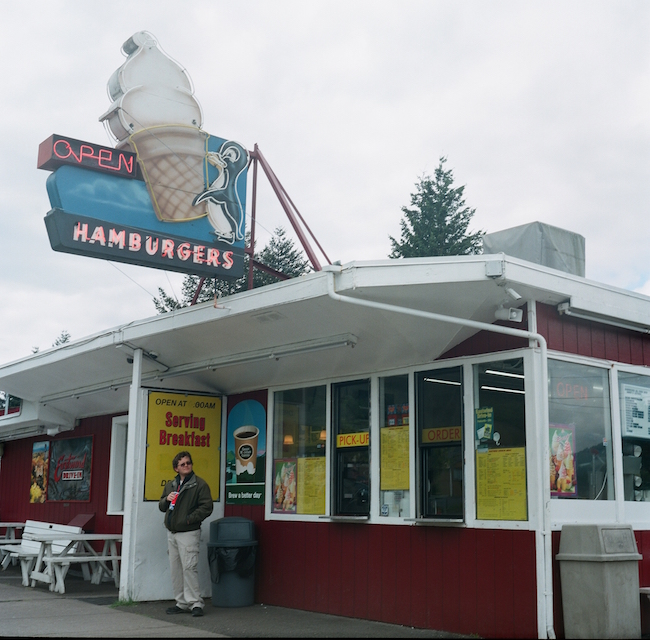
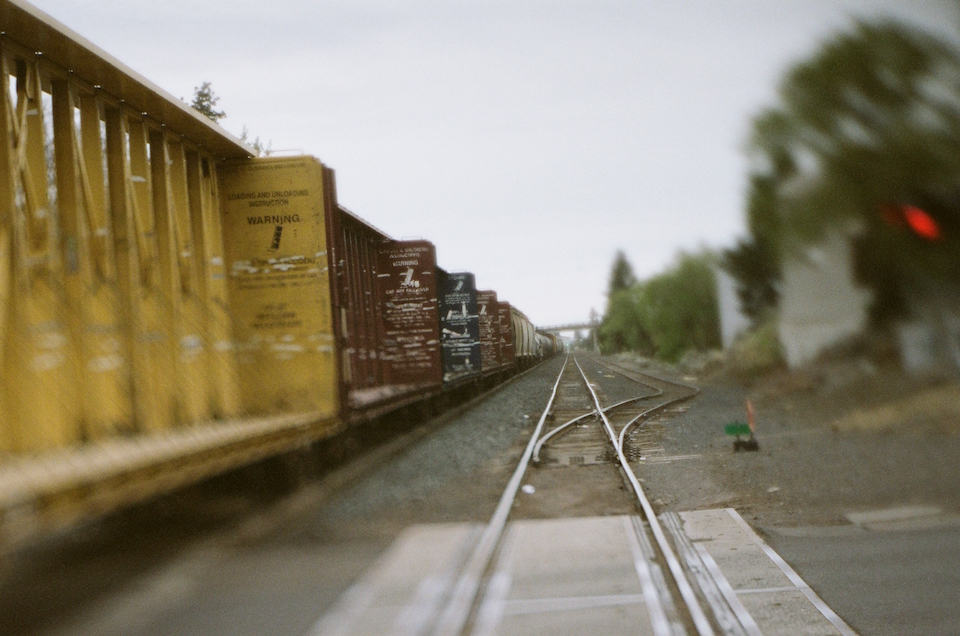
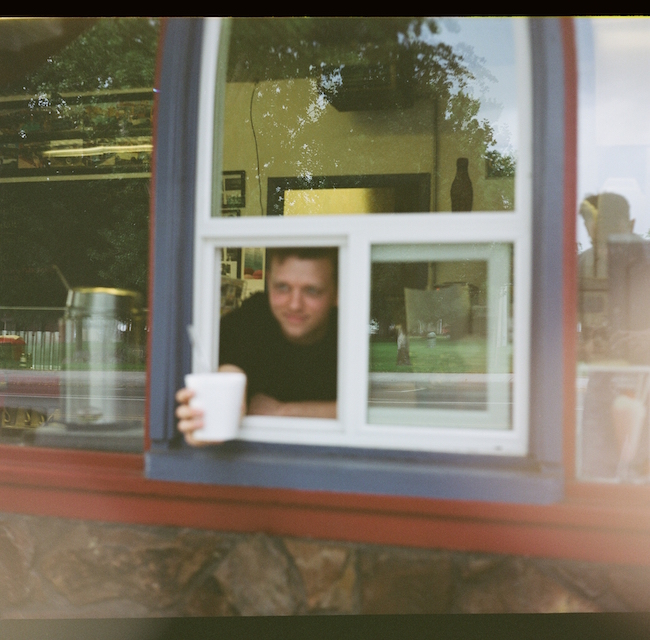

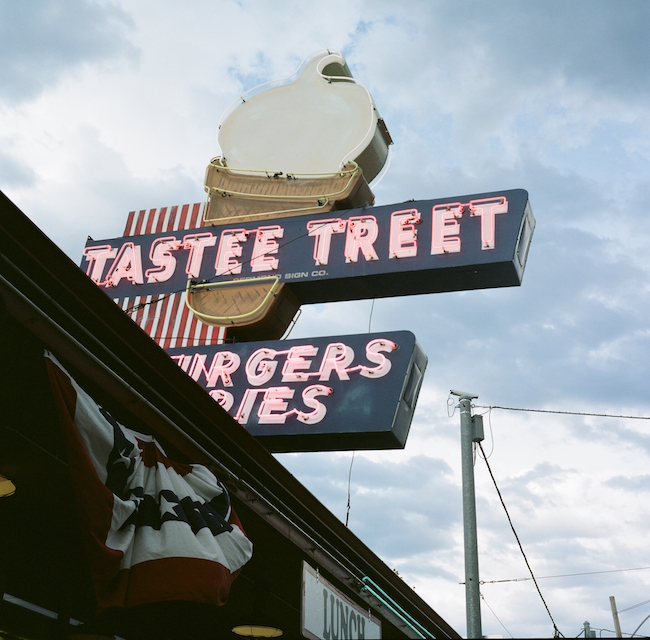

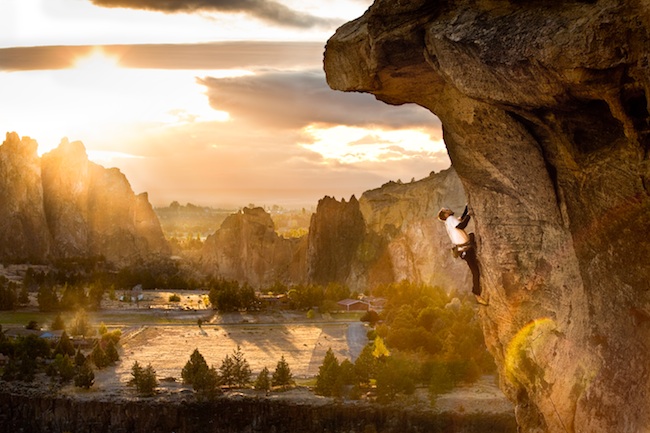
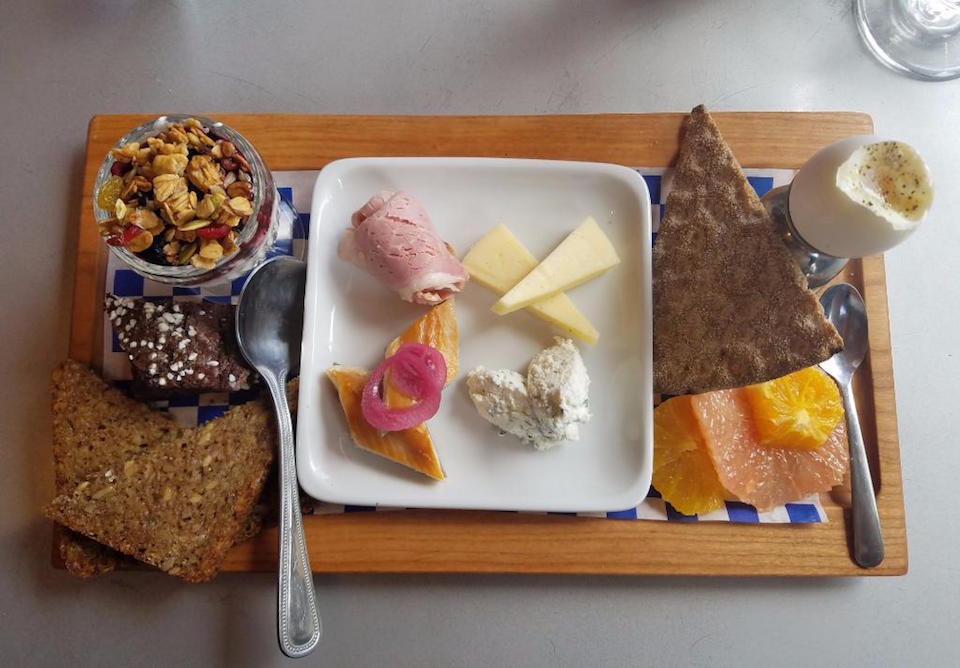




That’s it?? I was expecting LOTS of pictures. Did you run out of film?
We shot almost 700 pictures! Sounds like we need to add to this gallery! So be it! Stay tuned for the updated version. The readers have spoken!
I grew up in Oakridge (a small central Oregon logging town) and one of few still surrounded by national forest.
Great feature and much appreciated.
Your magazine is the only one that I have a subscription for.